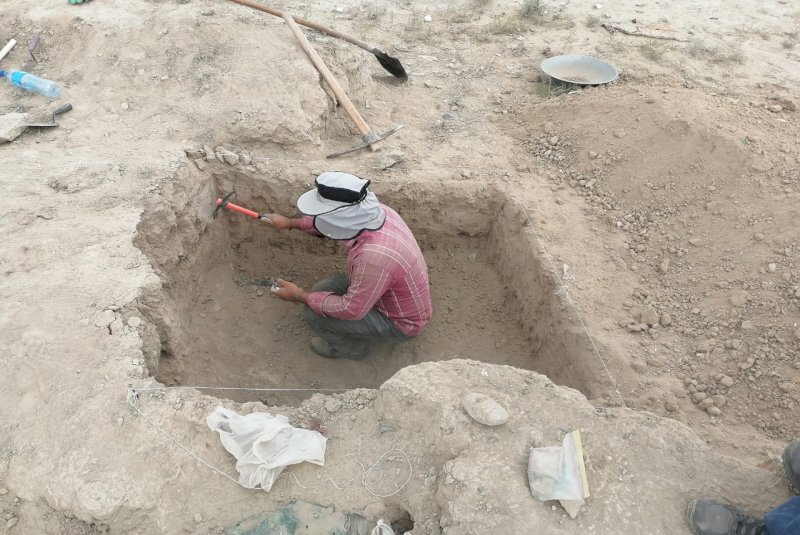Iranian-Italian team finishes work to document relief carvings

TEHRAN ––A team composed of Iranian and Italian cultural heritage experts has completed documentation of relief carvings situated on an ancient site in southwest Iran.
The follow-up project has completed a previous three-year professional work of laser-scanning that Iranian experts in close collaboration with their Italian counterparts commenced in Hung-e Azhdar, Khuzestan province, in the year 1386 (March 2007– March 2008), IRNA quoted Iranian archaeologist Mehdi Faraji as saying on Saturday.
Commenced early in 2021, the current expedition came to an end after two bas-relief carvings dating from the Old Elamite and Elymais/Parthian eras were documented, the archaeologist said.
Moreover, the team concocted field surveys to help determine (legal) boundaries of Hung-e Azhdar, the archaeologist said.
Elymais was an ancient Parthian vassal state located east of the lower Tigris River and usually considered part of the larger district of Susiana. It incorporated much of the area of the biblical region of Elam, approximately equivalent to the modern region of Khuzestan.
In 2010, the Iranian-Italian joint expedition in Khuzestan reportedly started the 2nd campaign in the area of Hung-e Azhdar, to develop the research begun in the 1st campaign (2008).
Located in a region inside the modern provinces of Ilam and Khuzestan, Elam was one of the most impressive civilizations of the ancient world. It was never a cohesive ethnic kingdom or polity but rather a federation of different tribes governed at various times by cities such as Susa, Anshan, and Shimashki until it was united during the Middle Elamite Period, briefly, as an empire.
The name Elam was given to the region by others– the Akkadians and Sumerians of Mesopotamia–– and is thought to be their version of what the Elamites called themselves– Haltami (or Haltamti)– meaning “those of the high country.” 'Elam', therefore, is usually translated to mean“highlands” or “high country” as it was comprised of settlements on the Iranian Plateau that stretched from the southern plains to the elevations of the Zagros Mountains.
Susa was formerly the capital of the Elamite Empire and later an administrative capital of the king of Achaemenian Darius I and his successors of 522 BC. Throughout the late prehistoric periods, Elam was closely tied culturally to Mesopotamia. Later, perhaps because of domination by the Akkadian dynasty (c. 2334–c. 2154 BC), Elamites adopted the Sumero-Akkadian cuneiform script.
Documents from the second period, which lasted from the 16th to the 8th century BC, are written in cuneiform; the stage of the language found in these documents is sometimes called Old Elamite. The last period of Elamite texts is that of the reign of the Achaemenian kings of Persia (6th to 4th century BC), who used Elamite, along with Akkadian and Old Persian, in their inscriptions. The language of this period, also written in the cuneiform script, is often called New Elamite.
Although all three stages of Elamite have not been completely deciphered, several grammatical features of the language are known to scholars. These include a plural formation using the suffix -p, the personal pronouns, and the endings of several verb forms.
Elamite language is an extinct language spoken by the Elamites in the ancient country of Elam, which included the region from the Mesopotamian plain to the Iranian Plateau. According to Britannica, Elamite documents from three historical periods have been found. The earliest Elamite writings are in a figurative or pictographic script and date from the middle of the 3rd millennium BC.
AM
Leave a Comment